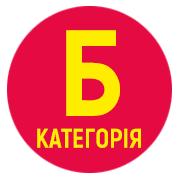FEATURES OF THE CONSTRUCTION OF THE ANNUAL TRAINING CYCLE FOR PARALYMPIC SKIERS OF THE SPORTS CLASS LW 10-12
DOI:
https://doi.org/10.32782/olimpspu/2023.3.10Keywords:
Paralympic sports, paralympic skiers, functional class, annual trainingAbstract
Athletes with musculoskeletal disabilities are the most dynamic spectator element of Paralympic sports, among whom the range of competitions is expanding, competition is growing, and new sports are emerging. Ski racing among athletes with disabilities, which was introduced at the 1st Winter Paralympic Games in 1976, has undergone significant changes over the years of its existence. New trends in the development of cross-country skiing in Paralympic sports are characterized by an increase in the speed of movement of athletes along the distance and an increase in the competition program, which makes it extremely necessary to carry out a further search for reserves associated with the preparation of paralyzed athletes. An analysis of cross-country skiing in the modern Winter Paralympic Games has identified significant changes in the terrain of the distances, the use of climbs of different lengths and angles, activities in difficult weather conditions (snowfall, wind, low temperature), which has a significant impact on the final competitive result and requires consideration of these factors when planning the annual training of paralympic skiers. The purpose of this work is to consider the features of constructing the annual training cycle for paralympic skiers of the sports class LW 10-12. The preparation process in Paralympic cross-country skiing is based on single-cycle planning of the annual macrocycle, which is aimed at ensuring the highest readiness for a specific start and is associated with the seasonality of the crosscountry skiing and the need for a long transition period for the recovery of paralympic skiers. The dynamics of general physical and special physical training, as well as the ratio of the volume and intensity of the load in the structure of the annual training of paralympic skiers, has a wave-like character. At the same time, the volume of special-preparatory funds in relation to general-preparatory ones increases significantly in the special-preparatory, pre-competition and competitive mesocycles, the volume of the load reaches its maximum in the special-preparatory mesocycle, and the intensity increases significantly in the competitive mesocycle at the stage of early starts and in the 1st and 2nd competitive mesocycles at the stage of the main starts. To ensure an individual approach in the process of training paralympic skiers, it is necessary to take into account their nosological group. Thus, the volume of load in various structural formations of the training process between representatives of different functional classes can vary from 5% to 8%.
References
Бріскін Ю., Передерій А. Вступ до теорії спорту інвалідів : навчальний посібник. Львів : Апріорі, 2008. 68 с. ISBN 78-966-8256-71-4.
Chui Ling Goh. To What Extent Does The Paralympic Games Promote The Integration Of Disabled Persons Into Society? International Sports Law Journal. 2020. Vol. 20. Р. 36–54. URL: dx.doi.org/10.1007/s40318-020-00164-w.
Передерій А.В., Розторгуй М.С. Теоретико-методичні підходи до періодизації багаторічної підготовки спортсменів в адаптивному спорті. Спортивний вісник Придніпров’я. 2016. № 1. С. 91–95.
Mishyn Maksym, Kamaiev Oleg, Mulyk Viacheslav, Taran Larysa, Grashchenkova Zhanna, Tarasevich Оlena, Hradusov Vladymyr, Mulyk Kateryna, Pomeshchikova Iryna. Problems and features of technique in the development of coordination abilities of players specializing in wheelchair basketball. Journal of Physical Education and Sport. 2018. 18 Supplement issue 2. Art 150. P. 1016–1020. DOI: 10.7752/jpes.2018.s2150.
Connick M.J., Beckman E., Tweedy S.M. Evolution and Development of Best Practice in Paralympic Classification. The Palgrave Handbook of Paralympic Studies. 2018. Р. 389–416. DOI : org/10.1057/978-1-137-47901-3_18.
Pastor D., Campayo-Piernas M., Pastor J.T., Reina R. A mathematical model for decision-making in the classification of para-footballers with different severity of coordination impairments. Journal of Sports Sciences. 2019. Vol. 37:12. Р. 1403–1410. DOI: 10.1080/02640414.2018.1560617.
Павленко Л., Мішин М. Сучасний погляд на спортивну підготовку атлетів з порушенням опорно-рухового апарату. Молодь та олімпійський рух : збірник тез доповідей XV Міжнародної конференції молодих вчених, 16 вересня 2022 р. Київ, 2022. С. 60–61.
Gastaldi L., Mauro S., Pastorelli S. Analysis of the pushing phase in Paralympic cross-country sit-skiers – Class LW10. Journal of Advanced Research. 2016. Vol. 7. Р. 971–978. URL: dx.doi.org/10.1016/j.jare.2016.10.003.
Mishyn M., Pavlenko L., Cieslicka M., Kamaiev O., Taran L. Influence of the functional class of Paralympic crosscountry sit-skiers on the effectiveness of competitive activity (on the example of the sprint distance). Slobozhanskyi Herald of Science and Sport. 2022. №. 26(4). Р. 124–132. URL: https:// doi.org/10.15391/snsv.2022-4.005.
Rosso V., Gastaldi L., Rapp W., Lindinger S., Vanlandewijck Y., Äyrämö S., Linnamo V. Balance Perturbations as a Measurement Tool for Trunk Impairment in Cross-Country Sit Skiing. Adapted Physical Activity Quarterly. 2019. Vol. 36(1). Р. 61–76. DOI: org/10.1123/apaq.2017-0161.
Lajunen K., Rapp W., Ahtiainen J.P., Lindinger S.J., & Linnamo V. Effect of Sitting Posture on Sit-Skiing Economy in Non-disabled Athletes. Frontiers in Sports and Active Living. 2020. Vol. 2:44, Р. 1–7. DOI: 10.3389/fspor.2020.00044.
Котляр С.М., Моісеєнко О.В. Удосконалення силової підготовки кваліфікованих лижників-гонщиків. Основи побудови тренувального процесу в циклічних видах спорту. 2017. С. 39–43.
Мулик В.В., Нестеренко А.Ю. Вплив застосування комплексів силових вправ на показники спеціальної сили м’язів плечового поясу спортсменів паралімпійської збірної України з лижних гонок та біатлону протягом підготовчого періоду. Слобожанський науково-спортивний вісник. 2015. № 3. С. 69–74.







